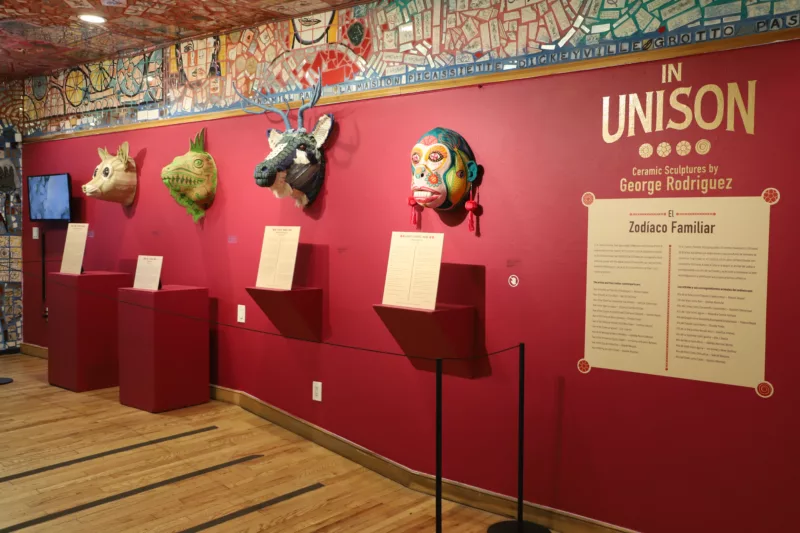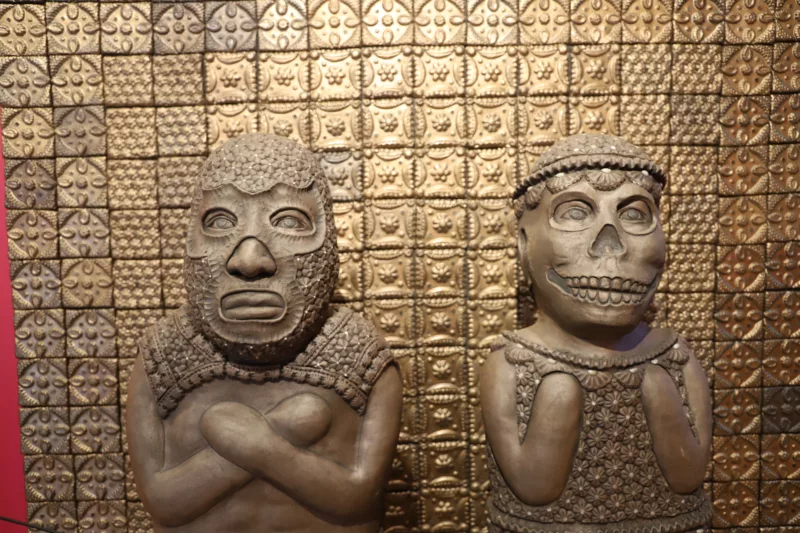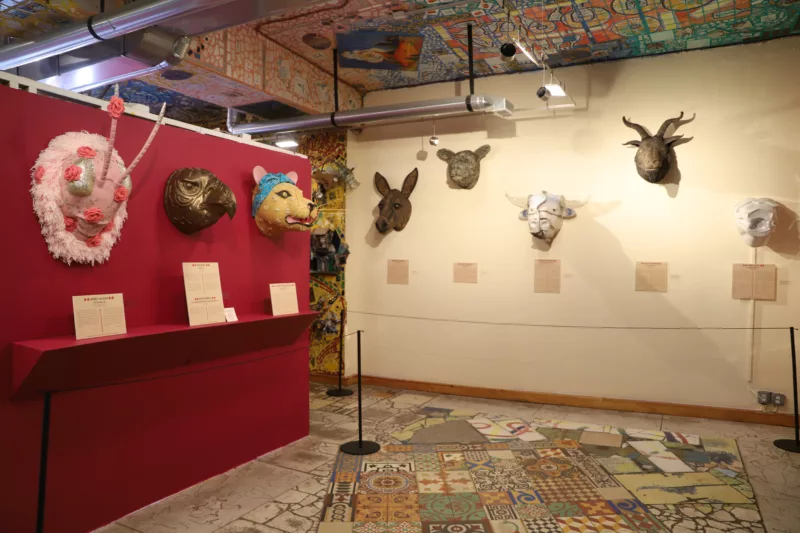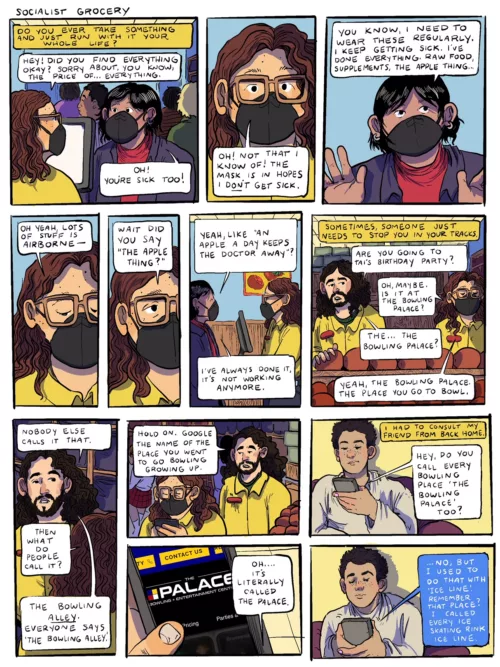
George Rodriguez is a ceramic artist brought up in El Paso, Texas, and working in Seattle and around the world. I first came to know his work through my time in the ceramics studio at Temple University, where he was an artist in residence. As I was taking a beginning ceramics course, there were, in the studio, several large guardians by him representing musicians on the way to their next gigs. I was able to get close and inspect the fine detailing that often appears in George’s work. The large eyes and massive stature of the figures gave a solemn and respected feeling. I became seriously infatuated with the size, the decoration, and the presence that George’s work commanded in a space that was not their intended setting. I was sad to see them leave the studio for their new home at the Kansas City Airport.
George’s most recent exhibition In Unison at Philadelphia’s Magic Gardens leaves me feeling a renewed respect for George’s vision, ability to relate multiculturalism, and the solemnity of the figures. In Unison features enormous animal heads, each animal representing a year on the Chinese Zodiac. To bring his Mexican heritage to the zodiac, he chose to represent each of the artists he collaborated with on the project as a native animal in and around Mexico. Thus the snake becomes the iguana, and the dragon, the Quetzalcoatl.

Each artist George collaborated with is Mexican or of Mexican descent and was born in the year of the Chinese zodiac that their bust represents. The collaboration in this project works to create a relation between each person’s experience as a person of Mexican descent and their interpretations of the culture and their life in it. One of my favorite pieces that tells a great story is “1977 (Iguana)” a collaboration with political cartoonist Eric J. Garcia. The work tells the story of Garcia’s conquistador ancestry as well as his struggle as a Chicano for justice and representation. The Iguana form is adorned in bright green and dark green paint, depicting news of the atomic bomb, military planes, and personal items relating to the history and life of Garcia. The most telling feature of the Iguana in the story of Mexican-American identity is found in the Iguana’s dewlap. The dangly bit hanging from his neck is painted to depict the border between the United States and Mexico. Showing Texas as a land of death, New Mexico with an SOS atop it, and Arizona as a vast desert. The work explains the life of the artists as Mexican-Americans and the current political situations of US-Mexican relations.
When collaborating with other artists on this project George seems to release the reins of form and decoration to whoever he’s working with. This results in each sculpture being vastly different. Either in message, material, or approach. The works featured are an excellent expansion of the appearance of George’s work. Rather than sticking strictly to the sprig decoration techniques he’s used to, the collaborative artists offer their skills as painters, weavers, or sound and video artists. “Guerrero (Quetzalcoatl)” a collaboration with Yosimar Reyes is a great showcase of this collaborative power. Yosimar uses the voice of her Abuelita (Grandmother), Mardonia Galeana, an 86-year-old undocumented woman telling her story as a Guerrero, a warrior. The shining white snake god with the woman’s voice (produced in an audio recording) brings down the guard of the viewer and reminds them of the strength of people moving their entire lives to new countries for a chance at better lives for their families. Meanwhile, the calm faces of the animal guardians stare unblinking.

There are still works in the show that use his patent sprig technique, using small molds to press clay into specific forms, like “Brave Nepantla (Jaguar)” using paisley sprigs created with fellow El Paso artist, Alejandra Carrillo-Estrada represents the Chicanx/e culture and urban subculture of Cholos as found in U.S. border cities like Los Angeles, Phoenix, and of course El Paso. The Jaguar wears a cyan bandana and is sprig embellished with paisley teardrops. Alejandra’s experience as a jewelry maker can be found in the gold hoops bearing words similar to hoops people often wear as earrings or other body adornment, featuring their names. The work is striking with its radiant gold whiskers giving a feeling similar to the radiant halo of the Virgin of Guadalupe. It’s beautiful and striking and stirs the Los Angeles native in my heart.
There are so many beautiful pieces in this show, each piece is its own separate hit and reason for allure to the show. A shortlist for me of works I haven’t mentioned yet, is EspÍritu del Viento (Chihuahua) with Gabriel Marquez, Burro Mezcladero with Christie Tirado, and last but certainly not least Cacomixtle del Desierto Sonorense with Samirah Steinmeyer. If you like ceramics or simply animals or just beautiful patterns and expressions of culture, this exhibition is worth a visit, and the Magic Gardens aren’t so bad either.
In Unison: Ceramic Sculptures by George Rodriguez, at Philadelphia’s Magic Gardens, til Sept. 10, 2023. For tickets and more information, check the website.









